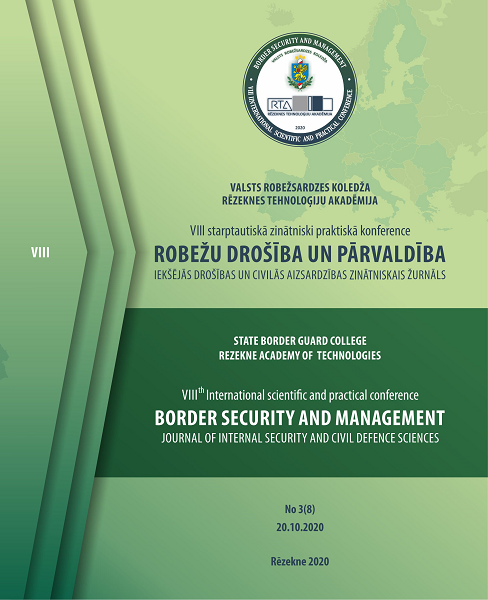THEORETICAL AND PRACTICAL ASPECTS OF USE OF ELECTROSHOCK WEAPON
DOI:
https://doi.org/10.17770/bsm.v3i8.5357Keywords:
electroshock weapon, Latvian Border Guard, special devices, Taser, X26Abstract
Currently, the use of firearms and special devices by law enforcement agencies in civilised democracies is strictly determined in accordance with the current legislation on the use of firearms and special devices. Their illegitimate or unauthorised application causes censure and sparks public outcry. Nevertheless, sometimes situations arise in which it is difficult and problematic for a law enforcement officer to make the right decision on the use of firearms, physical force, special devices and military working dogs. At the moment, the officers of the Latvian Border Guard are often simply unable to resist the illegal actions of offenders, since the current legislation is not always capable of justifying the lawful actions of the border guard. Also, sometimes the specific character of duty performance (a large crowd of people, the proximity of the state border) makes it impossible to use firearms. At the same time, the lack of regular training on the practical use of special devices (stack, handcuffs and others) significantly reduces the chances of their successful use by the Latvian Border Guard officers. Bearing and using electroshock weapons, and specifically stun guns of the TASER type, will significantly increase the level of security of the Latvian Border Guard staff, and will also allow the use of stun guns to ensure public order without risk to others and with minimal risk to the offender. The stun guns will allow you to blur the lines between physical abilities and the degree of physical fitness of the border guard and the offender, as a result of which a fragile girl - border guard can easily neutralise a raging athlete who is trying to disrupt public order and border control order with minimal harm.
References
1997. gada 27. novembra likums “Robežsardzes likums” – Latvijas Vēstnesis – 1997. – 329/330. Retrieved August 7, 2020, from: https://likumi.lv/ta/id/46228-robezsardzes-likums;
1998. gada 17. jūnija likums “Krimināllikums” – Latvijas Vēstnesis – 1998. – Nr.199/200. Retrieved August 7, 2020, from: https://likumi.lv/ta/id/88966-kriminallikums;
Ministru kabineta 2011. gada 18. janvāra noteikumi Nr.55 “Noteikumi par speciālo līdzekļu veidiem un to lietošanas kārtību” – Latvijas Vēstnesis – 2011. – 15. Retrieved August 7, 2020, from: https://likumi.lv/ta/id/224905-noteikumi-par-specialo-lidzeklu-veidiem-un-to-lietosanas-kartibu
Products webpage – Retrieved August 7, 2020, from: www.axon.com.






